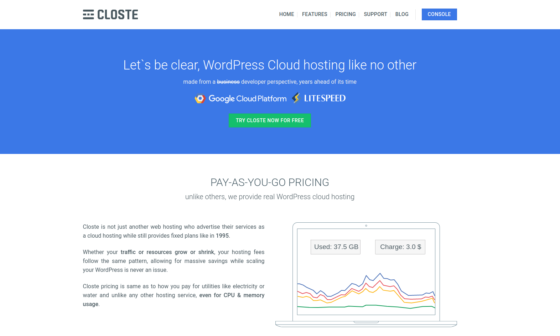I usually change hosting every 2 months, just to see how everyone performs. Every time I switch to a new hosting, I’ll run a few tests to see how it performs.
4 Pillars of Performance
Here are the important factors that you need to measure on choosing a hosting provider:
- Networking
- Server Hardware
- Handling Load
- Consistent Performance
Measure Networking
Measuring TTFB is a good way to test your hosting provider’s networking, caching functionality, server response time etc.
A good hosting/server should respond within 100ms if the server and test location (audience) is in the same region. Google and others recommend having a TTFB of less than 300ms worldwide.
How to measure TTFB
Several tools like GTmetrix, Pingdom, Google PageSpeed Insights can measure TTFB. But my favourite one is KeyCDN TTFB Test tool. It will test the TTFB from 14 locations.
Sucuri also provides a similar tool. But I found KeyCDN‘s results more accurate.
An ideal TTFB:
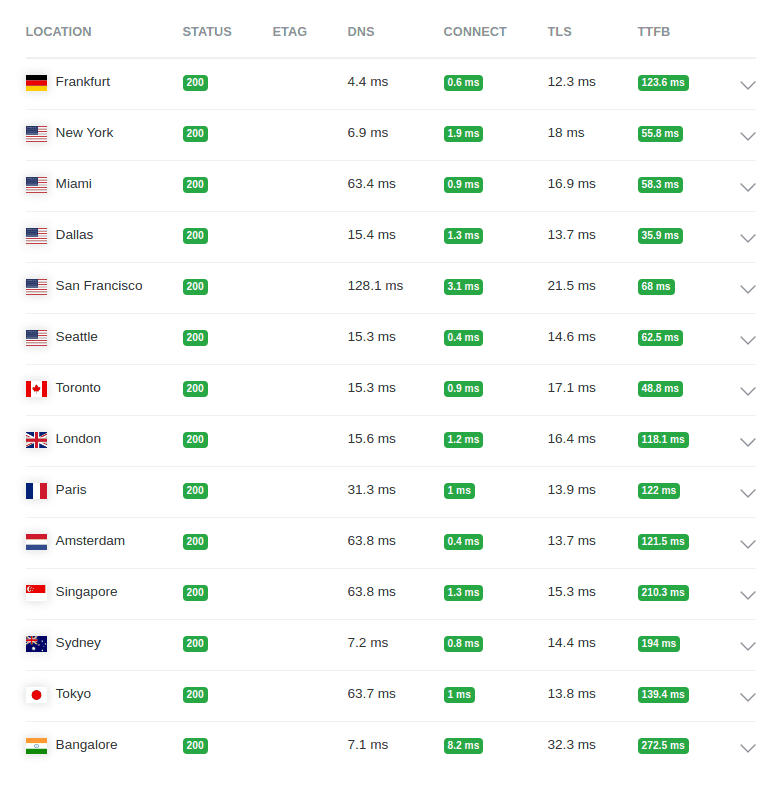
Also Read
Measure Server Hardware
Your hosting provider should have good hardware to execute PHP scripts and MySQL queries fast. It comes from the combination of a good SSD, RAM and CPU.
WPPerformanceTester is a plugin developed by Review Signal which will execute some PHP scripts and MySQL queries to benchmark your server.
Once the test results are complete, it will show your current server’s results with industry-standard (‘Your Results’ should be lower than ‘Industry Average’).
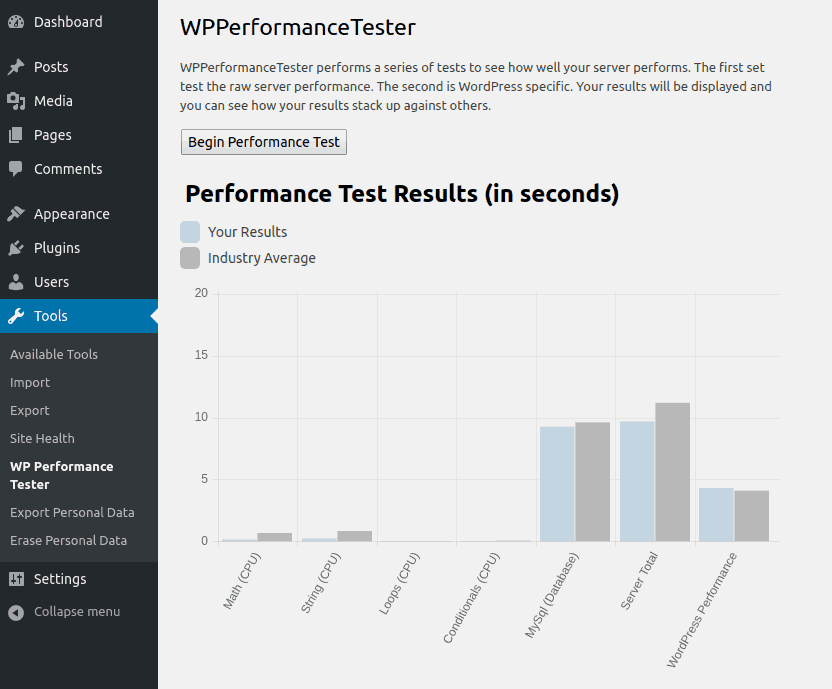
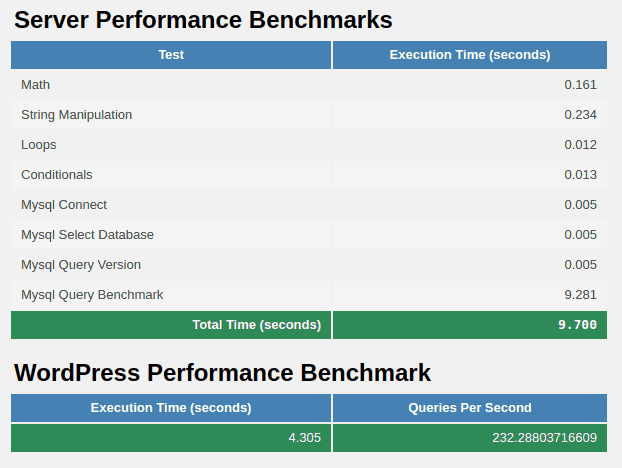
Measure Scaling
What happens when your blog post went viral one day? Are you sure that your hosting could handle it?
There are some limits on the numbers of requests (users) a server could handle. Database (MySQL) is usually a bottleneck. Redis, horizontal scaling of PHP containers could help.
It’s always a good idea to measure how much users your server could handle. This is also known as a stress test or load test. Here is how can you can do it in WordPress:
A good hosting provider can handle a minimum of 1000 requests per second
Consistent Performance
Ok, so your hosting provider performs well during the testing period. But what if they’re sharing your resources with other websites?! Whenever they’ve some heavy jobs like backups, your site should not be slow.
It’s not just shared hosting, even premium managed hosting providers share your resources with others. That’s why most of them have a list of disallowed plugins.
Use services like UptimeRobot that will continuously monitor your response time. You should run this test for a minimum of 24 hours.
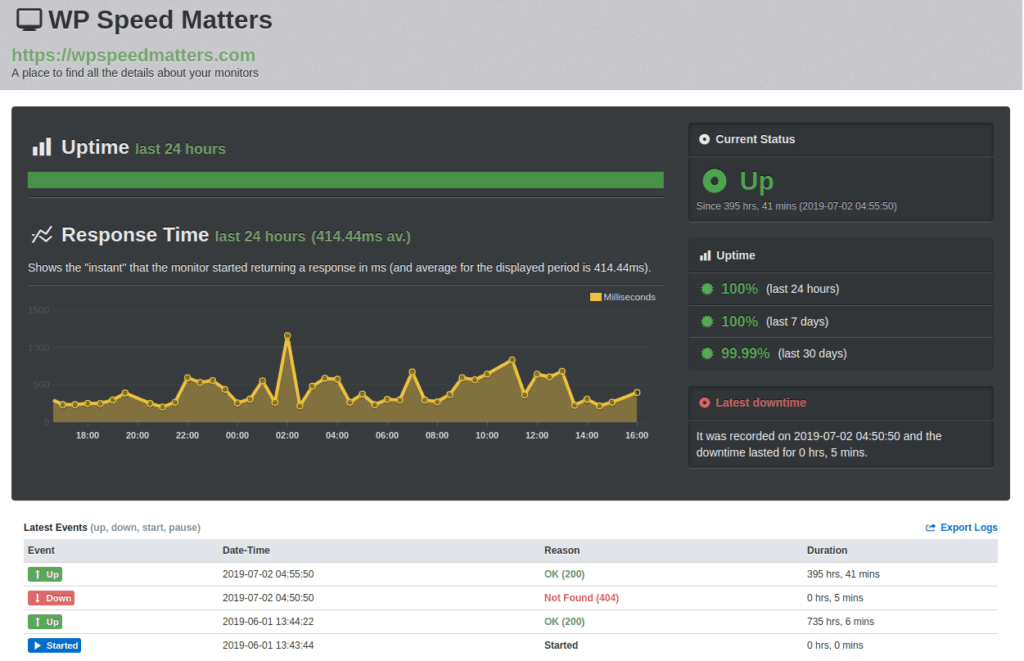
Why you shouldn’t consider Fully Loaded Time
The location of the server, CDN provider, use of external resources all impact fully loaded time. It may vary from time to time and the test location. So it’s better not to consider fully loaded time while benchmarking a hosting provider.
Conclusion
Never go with shared hosting!
Choosing a VPS can give you good results in TTFB, server hardware and consistent performance. But a single VPS won’t be able to handle load beyond a point. That’s the advantage of managed hosting providers like Kinsta. They’ll scale accordingly.
So these are the 4 ways I test or benchmark different hosting providers.
Comment below if you’ve any queries or feedback. I read and reply to each of them within 8 hours!





